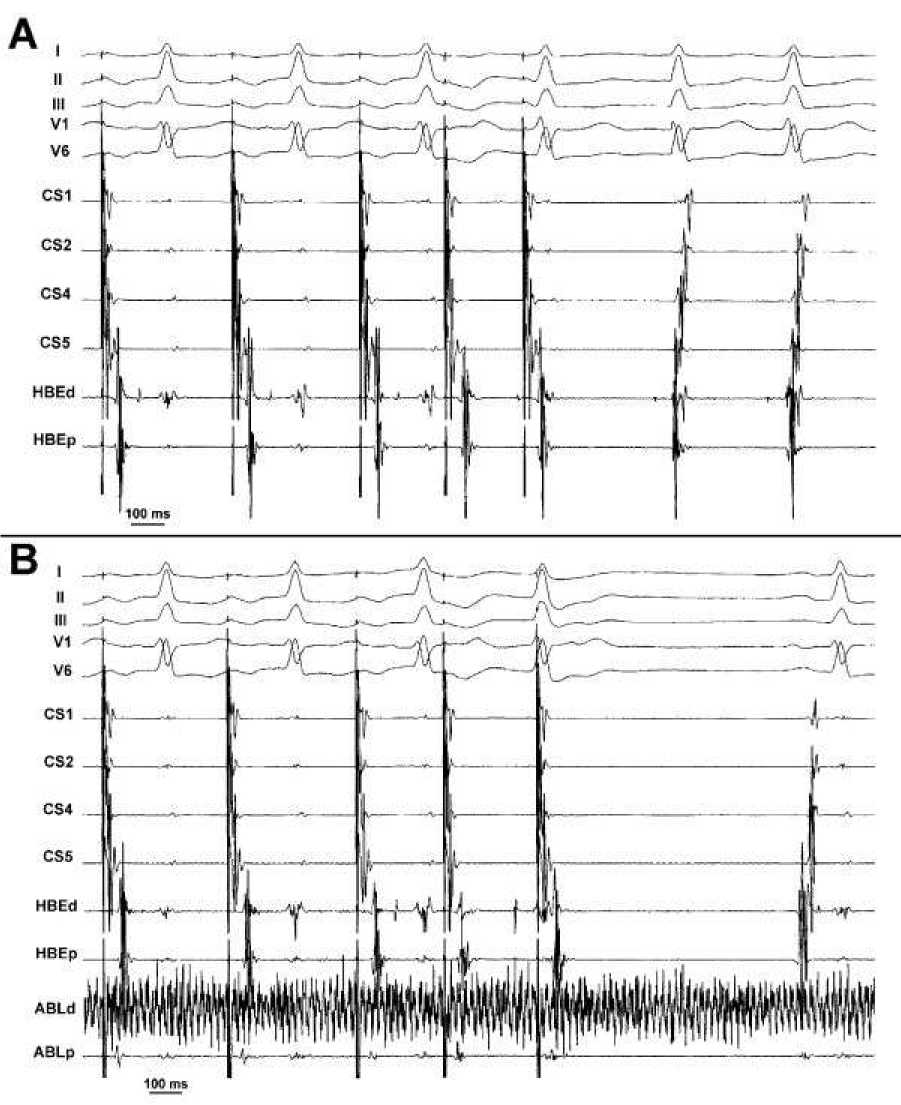Roberto De Ponti, “Cryothermal Energy Ablation Of Cardiac Arrhythmias 2005:
State Of The Art”
17

Figure 2A-B. Example of suppression of inducibility of atrioventricular nodal
reentrant tachycardia during cooling of the slow pathway. Form top to bottom, lead I,
II, III, V1, V6, bipolar recordings from the coronary sinus catheter (from distal to
proximal; CS4 is used for stimulation and not visualized) and from the distal (HBEd)
and proximal (HBEp) electrode pairs of the the His bundle catheter are displayed. In
panel A, programmed atrial stimulation (p=400, 260/240) from the coronary sinus
reproducibly induces typical sustained atrioventricular nodal reentrant tachycardia. In
panel B, also bipolar recordings from the distal (ABLd) and the proximal (ABLp)
electrode pairs of the cryoablation catheter are displayed. Now, during cooling at
-30°C on the slow pathway, S3 beat is blocked even at a longer coupling interval
(S3= 290 ms) and tachycardia is no longer inducible. Artefacts in the ABLd are due
to ice formation on the tip electrode.
Indian Pacing and Electrophysiology Journal (ISSN 0972-6292), 5(1): 12-24 (2005)
More intriguing information
1. The name is absent2. The name is absent
3. Social Cohesion as a Real-life Phenomenon: Exploring the Validity of the Universalist and Particularist Perspectives
4. The name is absent
5. The name is absent
6. Family, social security and social insurance: General remarks and the present discussion in Germany as a case study
7. Forecasting Financial Crises and Contagion in Asia using Dynamic Factor Analysis
8. For Whom is MAI? A theoretical Perspective on Multilateral Agreements on Investments
9. New urban settlements in Belarus: some trends and changes
10. The name is absent